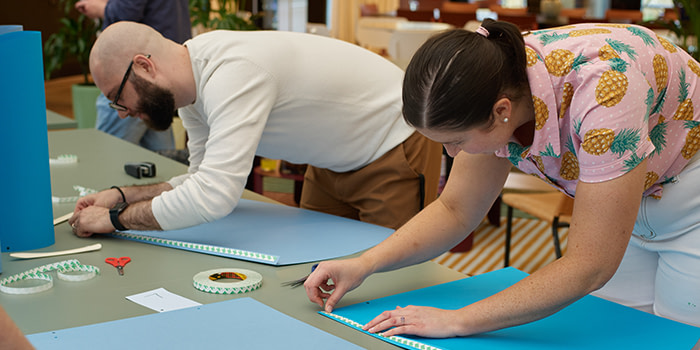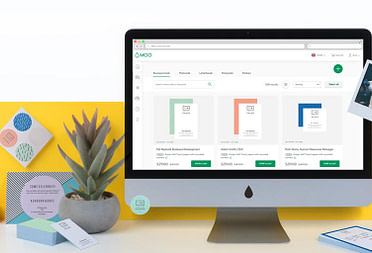10 ways to beat imposter syndrome in your team
Help your team go from self-doubt to self-belief.

70% of people experience imposter syndrome at some point in their lives. Imposter syndrome doesn’t discriminate—everyone from Albert Einstein to Meryl Streep has faced it. It’s extremely common to feel like you’re not good enough, even when you’re excelling.
For your team, self-doubt can do more than knock confidence. It can hold people back from speaking up, taking risks, or reaching their potential. And when your employees feel stuck, your business feels it, too. Imposter syndrome costs U.S. businesses around $3,400 in lost productivity per employee each year.
The good news is that companies can make a big difference. With the right tools and supportive culture, you can turn self-doubt into self-belief and help your team thrive.
What is imposter syndrome?
Imposter syndrome is the feeling that you’re a fraud, even when all the evidence says otherwise. It was first named in 1978 by psychologists Pauline Clance and Suzanne Imes after studying 150 high-achieving women who believed their success was down to luck, not their actual abilities.
While it can affect anyone, women, especially in male-dominated industries, are more likely to experience it, thanks to societal pressures and workplace biases.
Symptoms include self-doubt, perfectionism, overworking, and brushing off praise. If it’s not addressed, it can lead to stress, anxiety, burnout, and missed opportunities for growth.
How imposter syndrome impacts the workplace
At work, imposter syndrome can look like someone holding back their ideas, shying away from new challenges, or doubting they deserve a promotion. In hybrid or remote setups, it can be even worse. Without regular face-to-face feedback or chances to learn by watching others, people can feel disconnected and unappreciated.
When employees feel this way, it affects their confidence and impacts how they perform. But when businesses tackle these issues head-on, they build teams that are happier, more creative, and more engaged.
Simple ways to build confidence and connection at work
Here are some actionable tips to help create a workplace where your team feels valued, capable, and ready to shine:
1. Be open about your own challenges

Leaders shape company culture, so sharing your human side builds trust and connection. Sharing personal moments of self-doubt normalizes vulnerability and reassures your team they’re not alone.
2. Showcase diverse role models
Representation matters. Seeing leaders from all kinds of backgrounds and experiences reminds employees that success isn’t one-size-fits-all. Share stories about leaders who’ve faced their own self-doubt to inspire your team.
3. Set up mentor and peer support programs
Sometimes, people just need someone in their corner. Mentors and peer groups give employees a place to share, learn, and get encouragement, helping them feel less alone.
4. Invest in learning and growth
Training, workshops and professional development show that growth is part of the journey. For hybrid and remote teams, virtual learning options can help employees stay connected and confident.
5. Celebrate wins (big and small)

Recognition doesn’t have to be elaborate to be effective. Whether it’s a handwritten message on a Notecard or a Branded Gift, celebrating achievements boosts morale and reinforces self-worth.
6. Create a culture of belonging
When people feel like they belong, they’re more confident. Be flexible, encourage independence and make sure every voice is heard. Regular check-ins and open-door policies go a long way, no matter where your team works.
7. Promote reflection and positive thinking

Help employees reframe self-doubt with tools like journaling or gratitude exercises. A custom Notebook is a simple yet meaningful way to support their personal growth.
8. Give feedback that builds confidence
Constructive feedback is essential, but so is highlighting what employees are doing well. Regular one-on-one check-ins can help employees see their strengths and feel valued.
9. Tackle imposter syndrome early
Start on day one. During onboarding, remind new hires that learning curves are normal and that they’re bringing unique value to the team.
10. Bring the team together

A little fun can go a long way in building confidence and camaraderie. Host team-building activities, both virtual and in-person, that encourage employees to connect, share ideas and recognize each other’s strengths.
Unlock potential with MOO
Set your team and business up for success with MOO Business Plan. To get started, fill out this simple form, and one of our team members will be in touch shortly.
Keep in touch
Get design inspiration, business tips and special offers straight to your inbox with our MOOsletter, out every two weeks.






